A landing page is the first step to an interaction between a brand and its potential customers.
This is the reason why the way it’s designed can make a huge difference in the overall conversion rates and the growth of the business.
By focusing on factors such as compelling headlines, strong calls-to-action, user-friendly design, and trust-building signals, businesses can ensure that their landing pages capture attention and guide visitors toward taking meaningful action.
Whether the goal is to generate leads, make sales, or encourage visitors to take specific actions, an optimized landing page can be an important factor to consider. In this blog, we’ll discuss landing page optimization and its techniques.
What Is Landing Page Optimization?
Landing page optimization (LPO) is the process of improving all the necessary factors on a landing page to increase its effectiveness in driving conversions. The goal is to guide visitors toward completing a specific action, such as filling out a form, making a purchase, or subscribing to a service.
Optimization is driven by data and user behavior, which is why using methods like A/B testing and analytics to refine key elements and enhance the overall performance of the page.
Ultimately, landing page optimization helps to ensure that the page delivers the highest possible conversion rate and meaningful service and maximizes the return on investment (ROI) for marketing efforts.
Why Is Landing Page Optimization Necessary?
Landing page optimization is necessary because it directly impacts the effectiveness of the marketing efforts, helping to turn visitors into leads, customers, or subscribers. Without optimization, landing pages may suffer from high bounce rates, low conversions, and wasted marketing budget.
It allows businesses to understand user behavior in a better way, refine their messaging, and make data-driven decisions that maximize return on investment (ROI). In a competitive online landscape, optimized landing pages are key to staying ahead, driving more conversions, and achieving business goals efficiently.
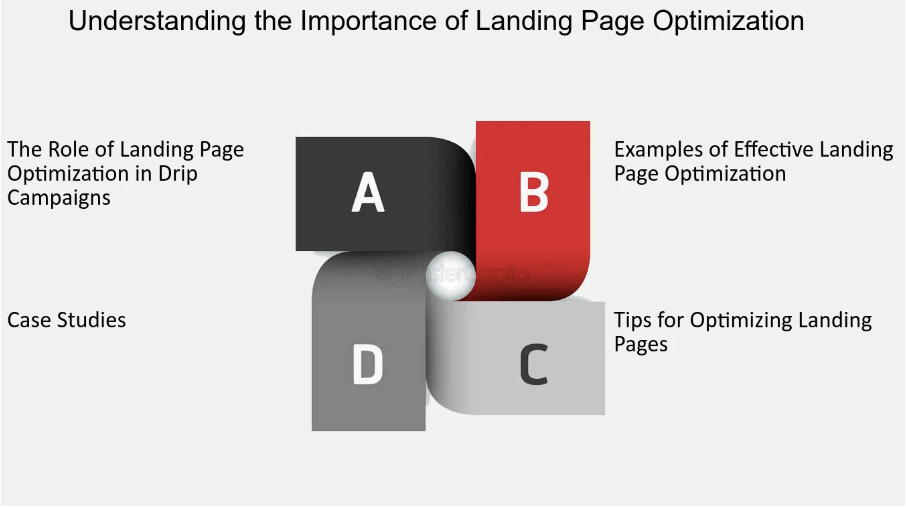
Top 10 Proven Methods For Landing Page Optimization
There are different ways to optimize your landing page. Below, we have discussed the 10 most effective landing page optimization techniques that you can use.
1. Clear and compelling headline
The headline is the first thing visitors see, so it must grab their attention immediately. It should clearly communicate the main benefit or solution you’re offering. A strong headline can quickly convey value and entice visitors to stay longer. Use persuasive, direct language that answers the visitor’s primary question: “What’s in it for me?”
Example: If you’re selling software that speeds up business processes, a headline like “Double Your Productivity with Our Time-Saving Software” is compelling because it promises a clear benefit.
2. Focus on a single, strong Call-to-Action (CTA)
Instead of overwhelming visitors with multiple actions (e.g., subscribe, contact, download), use one primary action that aligns with the page’s goal. Too many CTAs can confuse visitors and reduce the likelihood of conversion. A single, strong CTA keeps them focused on the desired action.
Example: If your goal is to get users to download an eBook, the CTA should be clear and action-oriented, like “Download the Free Guide” rather than a generic “Learn More.”
3. Use Social Proof
Social proof refers to showing evidence that others trust and have benefited from your product or service, including testimonials, user reviews, case studies, or logos of brands that use your product. People are more likely to trust and engage with something that others have validated. Social proof leverages the psychological principle that we often look to others to guide our decisions. For instance, businesses can add Google reviews to website to display authentic customer feedback, enhancing credibility and encouraging new visitors to trust their offerings.
Example: A landing page for a fitness app might show real-life testimonials from users who lost weight, along with their before-and-after photos.
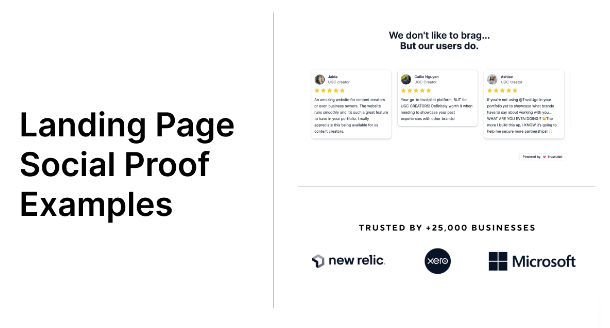
4. Optimize for mobile
A significant percentage of visitors will view your landing page on mobile devices, so it should be optimized for small screens. This includes mobile-friendly navigation, touch-friendly buttons, and fast load times. A poorly designed mobile experience leads to high bounce rates. Utilizing best practices in msp website design ensures your landing page looks good and works well on mobile, preventing lost conversions from mobile users.
Example: Ensure buttons are large enough to be clicked easily on mobile and that forms are easy to fill out on smaller screens without zooming in. An AI form builder can help you create dynamic ones.
5. Include a strong value proposition
The value proposition is a clear statement of why your product or service is beneficial and how it solves a visitor’s problem. It answers the question, “Why should I choose you? Visitors need to know right away why they should care about your offering. A strong value proposition shows them the unique value that sets you apart from competitors.
Example: A project management tool’s value proposition, such as “Save 10 hours a week with our intuitive project management software,” quickly tells users what benefit they’ll get.
6. Use engaging visuals
Visual elements such as high-quality images, videos, or graphics should enhance the user’s understanding of your product or service. Visuals can demonstrate how something works, evoke emotions, or create a strong brand impression. People process visuals faster than text, so using compelling images or videos helps quickly convey your message. Good visuals also make the page more appealing and memorable.
Example: A software landing page could include a short demo video showing how the software simplifies tasks or improves workflow efficiency.
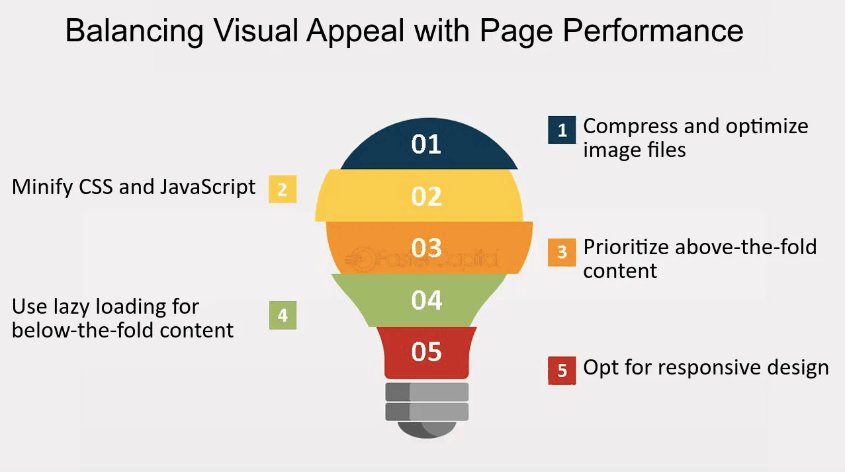
7. A/B testing
A/B testing involves creating two or more versions of your landing page with slight variations (like different headlines, images, or CTA buttons) and seeing which version performs better. Testing allows you to make data-driven decisions about what resonates best with your audience. Continuous testing helps refine your page to maximize conversion rates.
Example: Test two different CTA buttons—one that says “Get Started” and another that says “Try Free for 30 Days”—to see which drives more conversions.
8. Optimize speed and performance
Fast load times are critical for keeping users engaged. Every additional second a page takes to load increases the chance of visitors leaving without converting. Slow-loading pages frustrate users and lead to higher bounce rates. If you have a WordPress site, consider using optimized WordPress hosting to significantly improve your page load times. Optimizing images, compressing files, and minimizing HTTP requests help ensure quick load times.
Example: Use tools like Google PageSpeed Insights to identify what’s slowing down your page and make improvements. Ensure images are optimized and unnecessary scripts are removed.
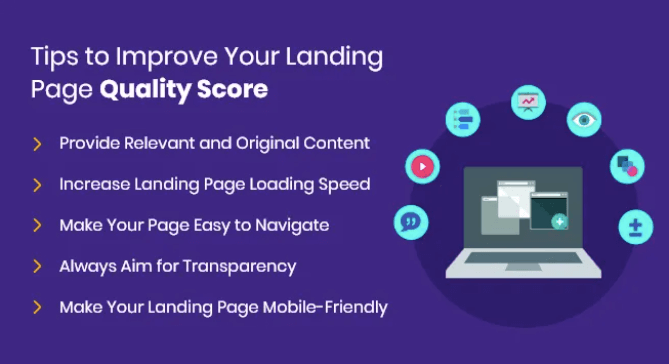
9. SEO optimization
Optimizing a landing page for SEO involves making the page more visible in search engines to attract organic traffic. Key strategies include:
Optimized landing pages appear higher in search results, making it easier for potential customers to find you. By focusing on specific keywords, you attract users who are actively searching for what you offer, increasing the likelihood of conversion. SEO best practices, such as fast loading times and mobile-friendliness, enhance the overall user experience, which can lead to better engagement and lower bounce rates.
Example: Imagine you have a landing page for a new online course on digital marketing.
By applying these SEO strategies, when users search for “digital marketing course,” your landing page has a better chance of ranking high in the results. This attracts more targeted traffic, leading to more sign-ups for your course.
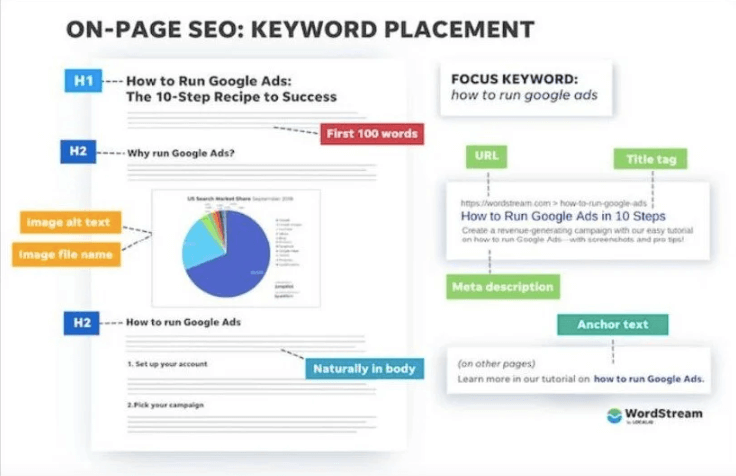
10. Create a sense of urgency
Encouraging the visitors to act quickly by incorporating urgency (e.g., “Limited time offer,” “Only 3 spots left”) can spur them to take action before leaving the page. Urgency taps into the fear of missing out (FOMO), driving users to convert now rather than later when they may have forgotten or lost interest.
Example: An eCommerce landing page might display a countdown timer next to a promotion, indicating that the discount will expire soon.
Conclusion
In the field of digital marketing, optimizing your landing page is crafting a compelling landing page in the marketplace. It gives us the chance to captivate visitors and guide them seamlessly toward taking action. The benefits are profound: increased conversion rates, higher engagement, and a significant boost in your digital marketing ROI.
With gradual progress and enhancement, along with improving a page, the entire business strategy can be improved. It ensures that every visitor leaves with an impression and an intent to return.
Optimize the landing page and watch it transform into a better conversion value customer experience.










